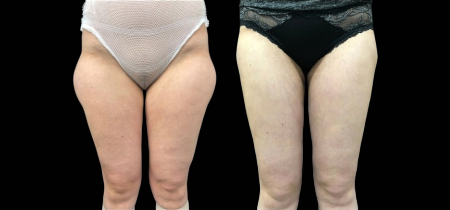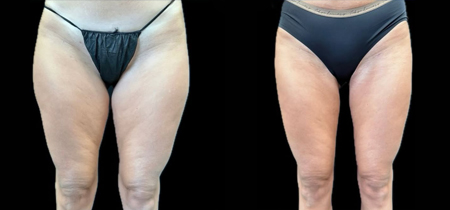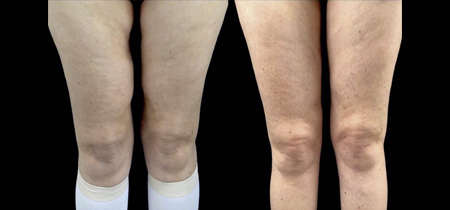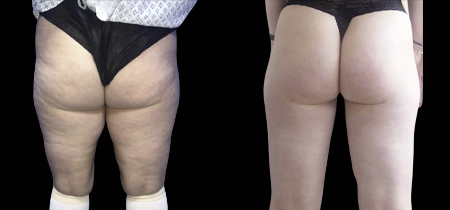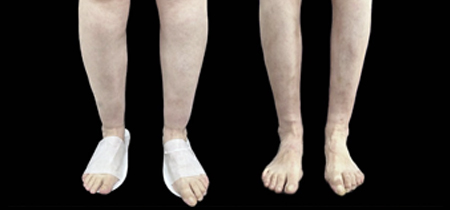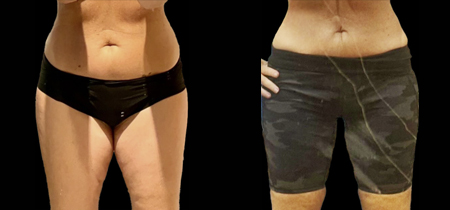VASER lipo: the most effective treatment for lipoedema
Lipoedema Surgery
VASER liposuction is the most effective treatment for lipoedema, offering significant and lasting fat removal. This advanced ultrasound technology targets and breaks down fat cells with precision, providing superior results.
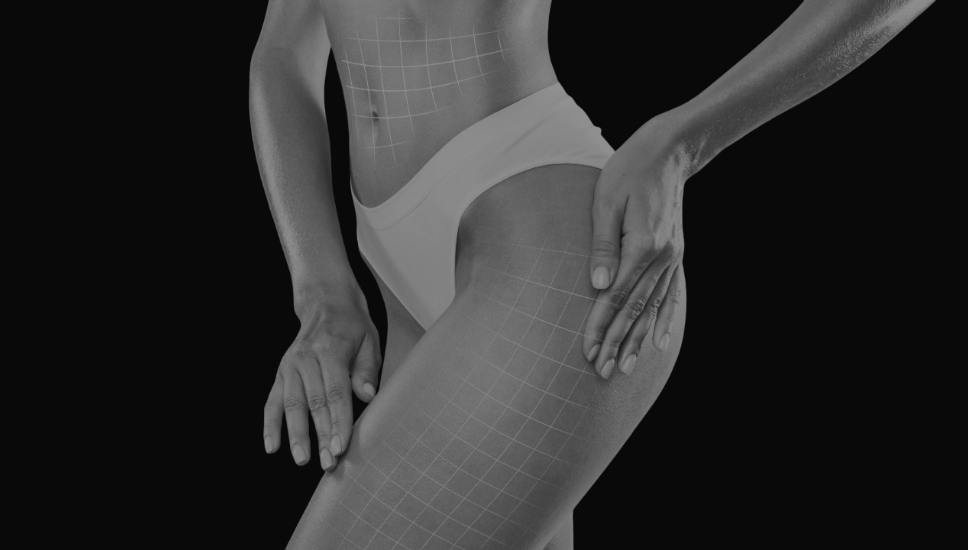
What is Lipoedema Surgery?
Lipoedema surgery, performed using VASER liposuction, is a specialised procedure that targets abnormal fat deposits typically found in the legs, hips, and arms. Lipoedema is a chronic condition, often misunderstood or misdiagnosed as obesity, which leads to disproportionate fat accumulation, tenderness, and mobility issues.
Unlike traditional fat, lipoedema fat is resistant to diet and exercise, making surgical intervention the most effective treatment option. By safely removing excess fat, lipoedema surgery alleviates discomfort, reduces swelling, and restores confidence in your body.
How Does Lipoedema Surgery Work?
Lipoedema surgery utilises VASER liposuction, an advanced technique that targets fat cells with precision. Ultrasound energy breaks down and liquefies excess fat, which is then gently suctioned out through small, discreet incisions. This approach minimises trauma to the surrounding tissues, ensuring a smoother recovery and superior results.
Immediate
Twilight Sedation or General
1 to 4 hours
Mild to Moderate
From £3763
n/a
£150
Minimal 7-14 Days
RESTORE COMFORT AND CONFIDENCE WITH PRECISION LIPOEDEMA TREATMENT
Am I a Candidate for Lipoedema Surgery?
Lipoedema surgery is ideal for individuals who struggle with abnormal fat accumulation in the legs, thighs, hips, or arms that does not respond to diet or exercise. You may also experience tenderness, discomfort, bruising, or reduced mobility as a result of the condition.
The ideal candidate is in good overall health, has realistic expectations, and seeks relief from the physical and emotional symptoms of lipoedema. Dr. Fasano will assess your condition and create a tailored treatment plan to address your unique needs.

Recovery After Lipoedema Surgery
Recovery from lipoedema surgery is generally smooth, with minimal downtime. Mild swelling, bruising, and tenderness are normal but typically subside within a few weeks. Patients are advised to wear compression garments to manage swelling and support the treated areas during the healing process.
Most individuals can return to light activities within 7–14 days, with ongoing improvements over the following weeks. Dr. Fasano will provide detailed aftercare instructions to ensure a seamless recovery and long-lasting results.
Key Benefits of Lipoedema Surgery
- Immediate Results – Noticeable reduction in excess fat deposits.
- Improved Mobility – Alleviates discomfort, making movement easier.
- Minimal Downtime – Recovery typically takes 7–14 days.
- Safe and Effective – VASER liposuction precisely targets lipoedema fat with minimal trauma.
- Permanent Results – Lasting improvements when maintaining a stable weight.
Request Your Consultation
Fill Out The Form Below To Request A Consultation With Dr Fasano To Discuss Your Options.
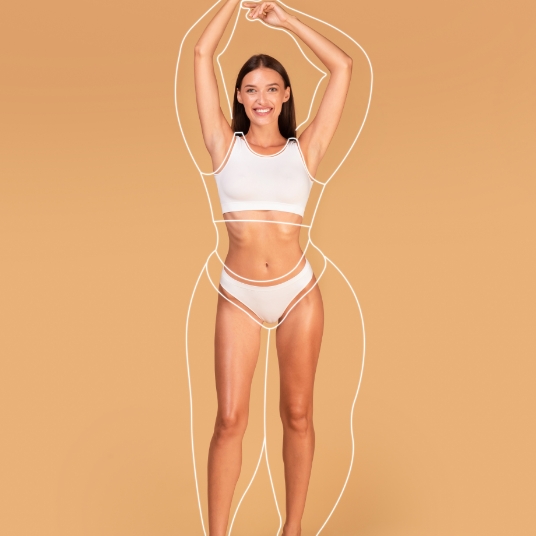
EXPERT LIPOSUCTION CARE TO RELIEVE LIPOEDEMA SYMPTOMS
Why Choose Dr. Fasano for Lipoedema Surgery?
Dr. Fasano specialises in advanced treatments for lipoedema, combining surgical precision with a compassionate, patient-centered approach. With extensive experience in VASER liposuction, Dr. Fasano ensures that abnormal fat deposits are safely removed while preserving surrounding tissues for minimal scarring and optimal results.
From your initial consultation to post-surgery care, Dr. Fasano and his team provide thorough guidance and support, helping you achieve relief from discomfort, improved mobility, and restored confidence.
Experience the transformative benefits of expert lipoedema care with Dr. Fasano.
BEFORE & AFTER RESULTS
View our collection of before & afters
Lipoedema Surgery Faqs
During your consultation with our expert Doctors you will learn all about the treatments suitable for you and your body. Patients sometimes visit our London and Birmingham Clinics with multiple areas of concern.
Lipoedema is a chronic condition where fat is abnormally deposited in the legs, hips, buttocks, and sometimes the arms. It mainly affects women and causes the limbs to become disproportionately larger than the rest of the body. The condition is often painful, causes easy bruising, and can limit mobility.
Even if the skin quality has a general improvement this greatly depends on three factors.
- The quality of the skin and flaccidity level before the procedure takes place.
- How good your body is at recovering from this kind of procedure.
- How good you are in wearing the compression vest and binder.
Because VASER liposuction melts the fat before gently sucking it out, this dramatically decreases the incidence of unevenness, asymmetries, lumpiness and indentations. Of course, an experience body sculptor is required to increase the chances of avoiding such complications.
Vaser liposuction not only will finally get rid of your unwanted stubborn fat but will also improve your skin quality.
Unlike regular fat that accumulates from weight gain, lipoedema fat is resistant to diet and exercise. Lipoedema fat also tends to be painful, causing swelling, tenderness, and easy bruising, which are not typical symptoms of regular fat
Yes, VASER liposuction is an effective treatment for removing the abnormal fat deposits caused by lipoedema. It uses ultrasound technology to break down and selectively remove fat cells while preserving important tissues, making it ideal for lipoedema patients.
VASER liposuction offers precise fat removal, preserves lymphatic structures, reduces pain, improves mobility, and may even stimulate skin tightening. It typically results in less bruising and swelling compared to traditional liposuction, offering a faster recovery time.
VASER liposuction uses ultrasound energy to emulsify the fat before removal, making it gentler on the surrounding tissues and blood vessels. This allows for more targeted fat removal and can reduce post-operative bruising, swelling, and downtime.
Yes, removing the excess fat through VASER liposuction can help reduce the pain, tenderness, and mobility issues associated with lipoedema. Additionally, it can improve lymphatic drainage, reducing the likelihood of swelling in the affected areas.
The number of sessions depends on the severity of the lipoedema and the amount of fat to be removed. Some patients may achieve satisfactory results after one session, while others may require 2 or 3 procedures to fully address the affected areas. This can be established at the time of the consultation with Dr Fasano
Recovery from VASER liposuction generally involves some swelling, bruising, and discomfort, but these symptoms tend to subside more quickly than with traditional liposuction. Most patients can resume light activities within a few days, and full recovery may take a few weeks to a few months, depending on the extent of the procedure. You can also read more about our Lymphatic Massages here.
While VASER liposuction can effectively remove the excess fat caused by lipoedema and improve symptoms, it is not a cure. Lipoedema is a chronic condition, and while fat removed during the procedure will not return in the treated areas, fat may still accumulate in other areas if the underlying condition progresses.
The ideal candidate is someone diagnosed with lipoedema who has not responded to conservative treatments like compression therapy or diet and exercise. Patients should be in generally good health, have realistic expectations about the outcome, and be looking to improve mobility, reduce pain, and enhance their quality of life.
A diagnosis of lipoedema involves a detailed patient history and physical examination by a doctor with expertise in this field. The doctor looks for signs like symmetrical fat deposits, pain, and easy bruising, while ruling out other conditions like obesity or lymphoedema. Imaging tests, such as ultrasound or MRI, are rarely needed but may be used to assess fat distribution or lymphatic function in complex cases. The key signs of lipoedema include swelling in the legs, hips, and sometimes the arms, with the feet and hands remaining unaffected. A family history is also an important factor to consider. Ideally, to have a formal diagnosis, as this is clinical in nature, there should be consensus in between two doctors that agree with making a diagnosis of Lipoedema.
Lipoedema is caused by abnormal fat accumulation, while lymphoedema is due to lymphatic fluid buildup from damaged lymph vessels. Lipoedema primarily affects the legs, hips, and arms, sparing the feet and hands, whereas lymphoedema often starts in the feet or hands and progresses upwards. In lipoedema, the fat feels firm and nodular, often painful, while lymphoedema involves softer swelling that may harden over time. Elevation doesn’t help with lipoedema swelling, but it can reduce lymphoedema. Bruising is common in lipoedema but rare in lymphoedema. Lipoedema worsens gradually with hormonal changes, while lymphoedema can progress quickly if untreated. Treatment for lipoedema often includes VASER liposuction and compression, while lymphoedema is managed by improving lymphatic drainage through compression and manual lymphatic drainage techniques.
